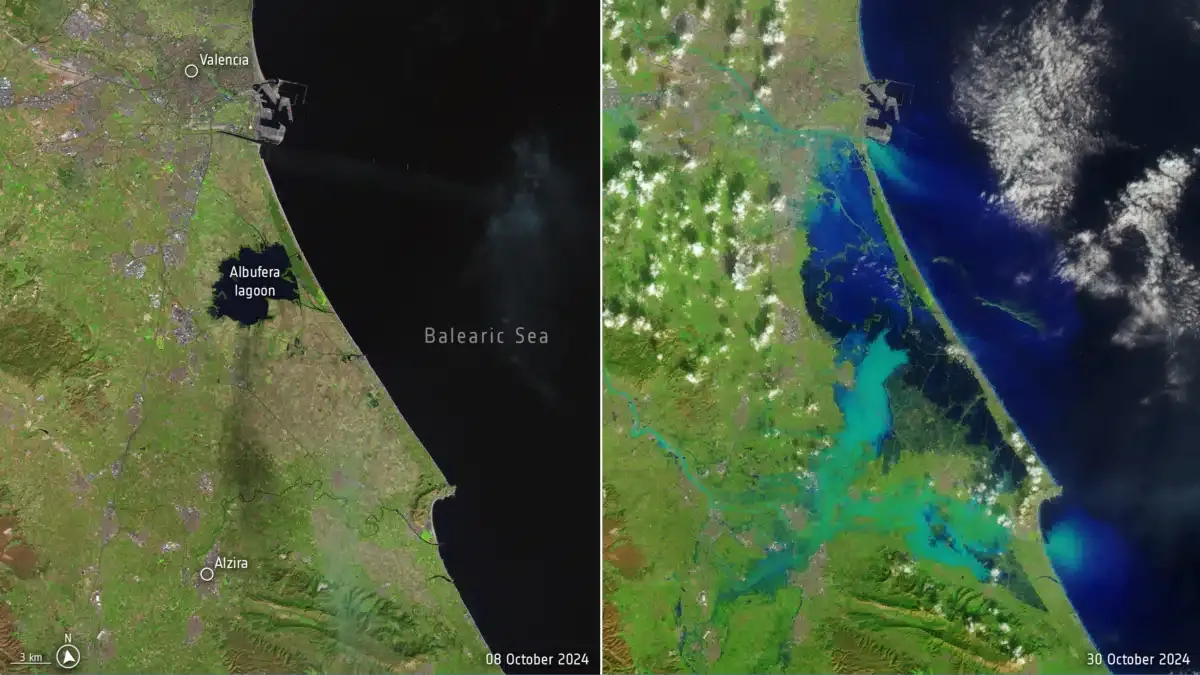First and foremost, on behalf of The Pineapple Corporation team, we’d like to extend our condolences and support to everyone affected by the recent tragedy in Valencia.
The DANA (also traditionally called “Gota Fría” in Spain) that struck the region has left devastating losses and profound pain in every corner. We don’t wish to enter into political discussions, but we firmly believe there is a need to analyze what happened, evaluate how the response could have been handled, and, most importantly, learn from the mistakes. We hope that responsibilities will be addressed decisively and exemplarily. This is not just a moment to lament what happened; it’s time to make the right and definitive decisions to ensure that such a catastrophe never happens again, in Valencia or anywhere else. And today, we want to talk about a tool that could make a real difference in that prevention: quantum artificial intelligence.
Because although it sounds like science fiction, the reality is that quantum AI is closer than we think, and its potential is far beyond just recommending us TV shows or making our lives more convenient. Its ability to process data at a level we can barely imagine puts us on the brink of a future where devastating natural phenomena like DANAs (often known as “cold drops”) could be predicted days or even weeks in advance. This isn’t just advanced technology; this is technology that can save lives.
What on Earth is quantum AI, and why does it matter so much?
First things first, if “quantum AI” sounds strange to you, don’t worry. The artificial intelligence we know today works in a binary system, where everything boils down to zeros and ones, like turning switches on and off. It’s useful, sure, but also very limited. With this binary technology, AI can analyze patterns, learn from data, and make predictions. But with quantum AI, we’re talking about such a colossal leap that what we have now feels like a pocket calculator in comparison.
Why? Because quantum computing doesn’t rely on zeros and ones; instead, it uses something called qubits. These qubits can be in more than two states (on and off); they can exist in multiple states simultaneously, a principle called superposition. This means that a quantum computer can process countless combinations of data simultaneously, rather than one by one. In other words, quantum AI could do in seconds what would take us weeks or months today.
And here’s where the magic begins. Today’s meteorological prediction systems can alert us with some lead time, but quantum AI could tell us not only “heavy rain is coming to the coast,” but also where, when, and with what precise intensity. We could have a detailed, accurate map of what’s coming, which would mean that authorities would have plenty of time to evacuate, mobilize resources, protect infrastructure, and save lives.
DANA in Valencia: What if we had quantum AI?
The latest DANA in Valencia left behind a trail of destruction, loss, and sorrow that is still very present. With technology of this caliber, could we have avoided the disaster? We don’t have a crystal ball, but the answer points to a fairly clear “yes.” Quantum AI could have anticipated the storm’s trajectory and exact strength days in advance. Quantum AI doesn’t just tell you if it’s going to rain; it tells you exactly how, where, and how much.
Imagine it: cross-referencing data on sea temperatures, wind speeds, humidity in every part of the territory, and thousands of other factors—all processed simultaneously in a fraction of the time. What today is an approximate prediction would become a precise and detailed alert. Authorities and emergency services would have had an exact map of the DANA, enabling them to know which areas needed evacuation, which infrastructures to reinforce, and where the greatest impact would likely occur. We wouldn’t have had to wait until the tragedy struck to begin acting.
Quantum AI: beyond science fiction
Now, you might wonder if this “quantum AI” stuff is just hot air. Well, it’s not. We’re much closer to this reality than it seems. Major tech companies like Google, IBM, and Microsoft are in a full-scale race to achieve what they call quantum supremacy: a point where quantum computers do things that classical computers could never dream of. This is not a long-term project; there are already working prototypes and practical applications of this technology in medicine, energy, and, yes, even meteorological prediction.
Do you know what that means? The day when a quantum computer warns you days in advance of a devastating storm is not far off. We could see quantum AI applications in less than a decade, helping to predict floods, wildfires, earthquakes, and even tsunamis. Everything that today seems random and impossible to anticipate could become predictable and manageable.
What would quantum AI look like in climate prediction?
It’s no exaggeration to say that, with this technology, the world would be a far safer place. Imagine a meteorological intelligence center that not only collects information from satellites and sensors but also analyzes all that data at breakneck speed, creating a real-time model of every atmospheric phenomenon. A quantum AI wouldn’t just make rough predictions; it would give concrete, precise data on storm intensity, river water levels, and risk areas. This means we could react before the disaster strikes.
Quantum AI could analyze every variable simultaneously: pressure changes, high-altitude winds, water temperatures, and thousands of other factors, all at once. And yes, we know this won’t happen overnight. We’re talking about a complex, costly technology that still needs to be developed. But the investment is worth it. We’re talking about reducing devastation and saving lives.
What do we need to get this technology ip and running?
The first thing is the development of quantum systems themselves. It’s no easy task, and it’s clear that time, investment, and political will are required to implement something of this scale. But when it comes to preventing tragedies, it’s a duty. Governments and tech companies need to work together on the development of these systems because quantum AI is not just a tool to “see the future”; it’s a tool to protect us from the disasters that future may bring.
A final reflection
Valencia has reminded us of our vulnerability in the face of nature. But technology, and especially quantum AI, can make a real difference. We can’t bring back what’s been lost, but we can work to be better prepared next time (because there will be a next time). If there’s a tool that could prevent disasters and save lives, it would be irresponsible not to invest in it. Quantum AI represents the hope that the next disaster won’t be a surprise but an opportunity to act with time and efficiency.
From here, we extend all our encouragement and support to those affected by the DANA in Valencia. It’s no consolation, we know, but we won’t stop looking for ways to make a better future. Because with technology and determination, disasters don’t have to be inevitable.










